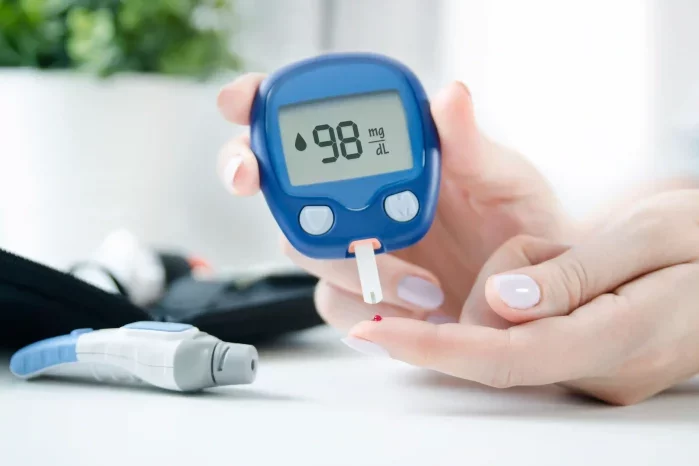Diabetes is a chronic metabolic disorder characterized by elevated blood glucose levels. The disease affects millions of people worldwide and comes in various forms, each with its own set of characteristics and management strategies. Understanding the different levels of diabetes is crucial for effective diagnosis, treatment, and management. This article provides a detailed overview of the different levels of diabetes, including Type 1 diabetes, Type 2 diabetes, gestational diabetes, and prediabetes, and offers insights into their unique features, symptoms, and management approaches.
1. Type 1 Diabetes
Overview
Type 1 diabetes is an autoimmune condition in which the body’s immune system attacks and destroys insulin-producing beta cells in the pancreas. This results in little to no insulin production, necessitating lifelong insulin therapy. Type 1 diabetes is typically diagnosed in children and young adults, though it can occur at any age.
Symptoms
The onset of Type 1 diabetes is usually rapid and can include:
Frequent Urination: The body attempts to expel excess glucose through urine, leading to frequent urination.
Excessive Thirst: Increased fluid loss results in heightened thirst.
Extreme Fatigue: The body’s inability to utilize glucose for energy can cause significant fatigue.
Unexplained Weight Loss: As the body breaks down muscle and fat for energy, weight loss may occur.
Blurred Vision: High blood glucose levels can lead to fluid shifts in the eye, causing temporary blurred vision.
Diagnosis
Diagnosis is typically made through a combination of:
Fasting Blood Glucose Test: Measures blood glucose levels after fasting for at least 8 hours.
Hemoglobin A1c Test: Reflects average blood glucose levels over the past 2-3 months.
Oral Glucose Tolerance Test (OGTT): Assesses blood glucose levels after consuming a glucose-rich drink.
Autoantibody Tests: Detects the presence of antibodies associated with autoimmune destruction of beta cells.
Management
Management of Type 1 diabetes involves:
Insulin Therapy: Daily insulin injections or the use of an insulin pump to regulate blood glucose levels.
Blood Glucose Monitoring: Regular monitoring to adjust insulin dosages and manage blood glucose levels.
Dietary Management: A balanced diet to maintain stable blood glucose levels.
Exercise: Regular physical activity to improve insulin sensitivity and overall health.
Education and Support: Diabetes education to understand disease management and coping strategies.
2. Type 2 Diabetes
Overview
Type 2 diabetes is characterized by insulin resistance and a gradual decline in insulin production. It is the most common form of diabetes, often associated with lifestyle factors and genetic predisposition. Unlike Type 1 diabetes, Type 2 diabetes can be managed with lifestyle changes, oral medications, and sometimes insulin.
Symptoms
Symptoms of Type 2 diabetes can develop gradually and may include:
Frequent Urination and Increased Thirst: Similar to Type 1 diabetes, but often less severe.
Fatigue: Due to impaired glucose utilization.
Blurred Vision: Caused by fluid shifts in the eye.
Slow-Healing Wounds: High blood glucose levels can impair wound healing.
Frequent Infections: Due to weakened immune response.
Diagnosis
Type 2 diabetes is diagnosed through:
Fasting Blood Glucose Test: Measures glucose levels after an overnight fast.
Hemoglobin A1c Test: Reflects average glucose levels over 2-3 months.
Oral Glucose Tolerance Test (OGTT): Assesses blood glucose response to a glucose-rich drink.
Random Blood Glucose Test: Measures glucose levels at any time of the day.
Management
Management strategies include:
Lifestyle Modifications: Adopting a healthy diet, increasing physical activity, and achieving weight loss if overweight.
Oral Medications: Such as metformin, sulfonylureas, and SGLT2 inhibitors, to improve insulin sensitivity and glucose control.
Insulin Therapy: May be required if oral medications are insufficient.
Regular Monitoring: Tracking blood glucose levels to adjust treatment plans as needed.
Education and Support: Ongoing education on disease management and lifestyle changes.
3. Gestational Diabetes
Overview
Gestational diabetes occurs during pregnancy when the body cannot produce enough insulin to meet the increased needs. It typically develops in the second or third trimester and usually resolves after childbirth. However, women who experience gestational diabetes are at higher risk of developing Type 2 diabetes later in life.
Symptoms
Gestational diabetes often does not present symptoms, but it can be identified through routine screening. Possible signs include:
Frequent Urination
Excessive Thirst
Fatigue
Blurred Vision
Diagnosis
Gestational diabetes is diagnosed through:
Oral Glucose Tolerance Test (OGTT): Usually performed between 24 and 28 weeks of pregnancy. The test measures blood glucose levels after consuming a glucose-rich drink.
Fasting Blood Glucose Test: May also be used to screen for gestational diabetes.
Management
Managing gestational diabetes involves:
Dietary Modifications: Following a balanced diet to maintain stable blood glucose levels.
Physical Activity: Regular exercise to improve glucose utilization.
Blood Glucose Monitoring: Frequent monitoring to ensure levels remain within target ranges.
Insulin Therapy: If blood glucose levels cannot be controlled with diet and exercise alone.
Postpartum Follow-Up: Monitoring blood glucose levels after childbirth and assessing the risk of developing Type 2 diabetes.
4. Prediabetes
Overview
Prediabetes is a condition characterized by higher-than-normal blood glucose levels that do not yet meet the criteria for diabetes. It is a significant risk factor for developing Type 2 diabetes and cardiovascular disease.
Symptoms
Prediabetes often has no clear symptoms. However, individuals at risk may experience:
Increased Thirst
Frequent Urination
Fatigue
Diagnosis
Prediabetes is diagnosed through:
Fasting Blood Glucose Test: Levels between 100 and 125 mg/dL (5.6 to 6.9 mmol/L) indicate prediabetes.
Hemoglobin A1c Test: A1c levels between 5.7% and 6.4% suggest prediabetes.
Oral Glucose Tolerance Test (OGTT): Blood glucose levels between 140 and 199 mg/dL (7.8 to 11.0 mmol/L) two hours after a glucose-rich drink indicate prediabetes.
Management
Preventing the progression to Type 2 diabetes involves:
Lifestyle Changes: Adopting a healthy diet, increasing physical activity, and achieving weight loss.
Regular Monitoring: Periodic blood glucose testing to track changes and assess risk.
Education and Support: Learning about risk factors and preventive measures to maintain a healthy lifestyle.
5. Other Specific Types of Diabetes
Monogenic Diabetes
Monogenic diabetes is a rare form of diabetes caused by a single genetic mutation. It includes:
MODY (Maturity-Onset Diabetes of the Young): A type of monogenic diabetes that typically presents in adolescence or early adulthood and can be mistaken for Type 1 or Type 2 diabetes. It is inherited in an autosomal dominant pattern.
Secondary Diabetes
Secondary diabetes is a result of other medical conditions or treatments, such as:
Cystic Fibrosis Diabetes: Common in individuals with cystic fibrosis due to pancreatic damage.
Steroid-Induced Diabetes: Resulting from the use of corticosteroids for treating other conditions.
Management Strategies Across Diabetes Types
Individualized Care
Effective management of diabetes requires an individualized approach based on the type of diabetes, overall health, lifestyle, and treatment goals. This includes:
Regular Monitoring: Frequent assessment of blood glucose levels to guide treatment adjustments.
Medication Management: Utilizing appropriate medications based on the type and severity of diabetes.
Lifestyle Modifications: Implementing dietary changes, increasing physical activity, and achieving weight loss if necessary.
Education and Support: Ongoing education to understand diabetes management and access to support resources.
See also: What Causes Long-Term Complications of Diabetes?
Conclusion
Understanding the different levels of diabetes is essential for effective diagnosis, treatment, and management. From Type 1 and Type 2 diabetes to gestational diabetes, prediabetes, and other specific types, each form of diabetes presents unique challenges and requires tailored management strategies. By recognizing the symptoms, understanding the diagnostic criteria, and implementing appropriate management plans, individuals with diabetes can achieve better health outcomes and improve their quality of life. Regular consultation with healthcare providers and ongoing education are critical components of successful diabetes management and prevention.
Related topics:
What Destroys Beta Cells in the Pancreas


























